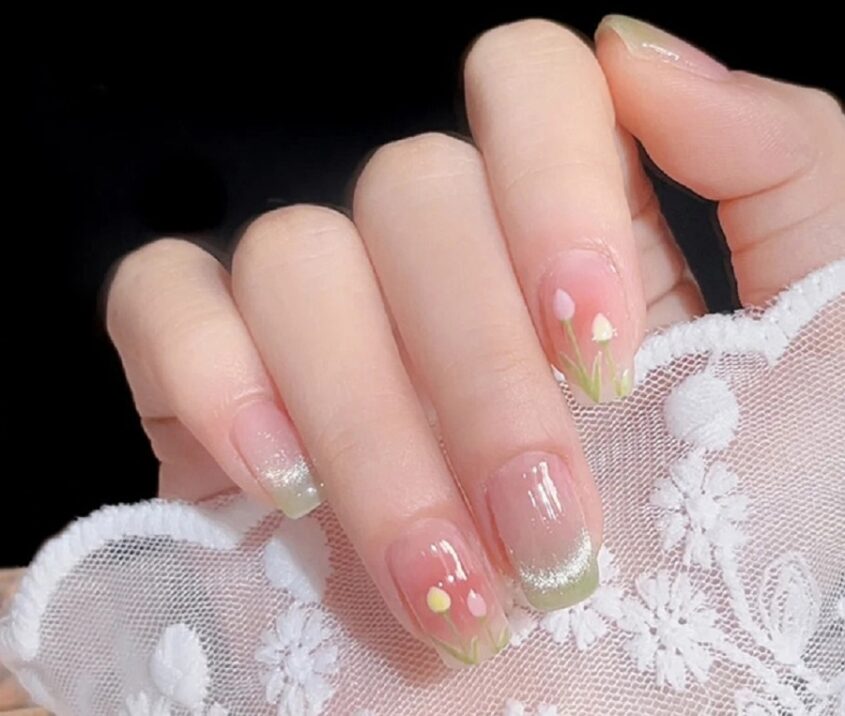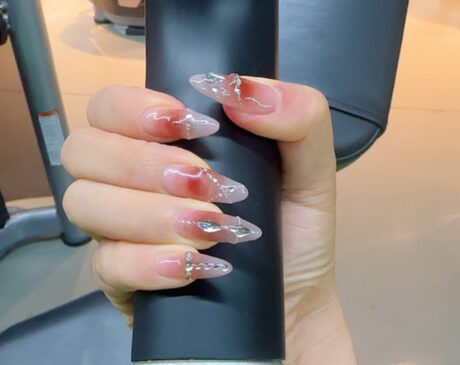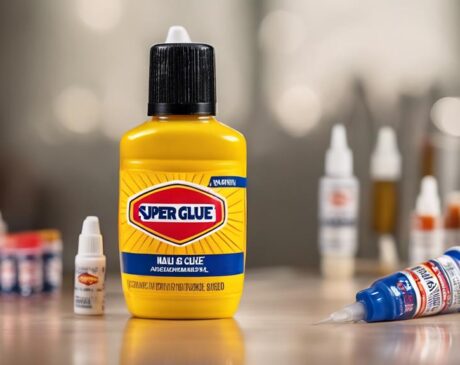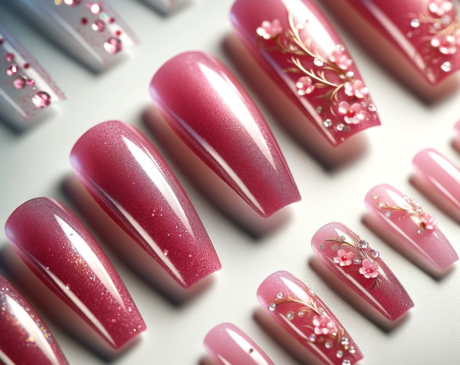What is the Downside to Press-On Nails?

In recent years, press-on nail art has gained popularity as a convenient and affordable alternative to traditional nail art. Often made of plastic or acrylic, these artificial nails come in a variety of shapes, sizes and designs, allowing individuals to get a salon-quality manicure in the comfort of their own home. While there are many benefits to press-on manicures, it is also important to understand the potential drawbacks to using them. In this article, we will explore the drawbacks of press-on manicures and provide valuable insight for those considering using this method of nail art.
1. Temporary nature of press-on nails
press-on nails are designed as a temporary manicure that individuals can easily apply and remove at home. While this temporary aspect offers flexibility, it also means that the results will not last. Unlike salon-applied nail enhancements such as acrylic or gel nails, press-on nails typically last a shorter time.
2. Limited durability and longevity
Due to their temporary nature, press-on nails are usually less durable compared to salon-applied nail enhancements. They are more likely to chip, buckle or even peel, especially when in constant contact with water or during strenuous activity.
3. Difficult to achieve a custom fit
press-on nails come in pre-designed shapes and sizes, so it can be difficult to find the perfect match for everyone’s natural nail shape and size. While they often come in a variety of sizes to fit different fingers, some people may have difficulty finding a press-on nail that fits their nails perfectly, leading to potential discomfort and instability.
4. Adhesive sensitivity and allergic reactions
Adhesives used to secure press-on nails can irritate the skin, especially for people with sensitive skin. Allergic reactions, such as redness, itching or swelling, may be caused by the ingredients present in the adhesive or by the material used to make the press-on nail itself.
5. Potential damage to natural nails
Improper application or removal of press-on nails may result in damage to the natural nail. Forced removal or stripping of press-on nails without proper care can cause natural nails to weaken, become brittle, or even break. It is critical to follow the recommended removal process to minimize the risk of damaging your natural nails.
6. The challenge of maintaining nail hygiene
press-on nails can make it more difficult to maintain optimal nail hygiene. The gaps between press-on nails and natural nails can accumulate dirt, moisture and bacteria that can lead to nail infections or other nail-related problems. Regular cleaning and proper maintenance is necessary to mitigate these risks.
7. Limitations on nail care activities
Engaging in certain activities, such as sports, housework or physical labor, may pose challenges to wearing press-on nails. The adhesive may not be able to withstand excessive force or friction, causing the nail to loosen or fall off. People who lead active lifestyles or work in demanding occupations may find press-on nails unsuitable for everyday wear.
8. Potential damage to natural nail growth
Continued use of press-on nails may hinder the natural growth and health of the nails underneath. The constant application and removal process and adhesives can weaken natural nails, making them more susceptible to breakage and slow growth.
9. Professional nail art is difficult to replicate
While press-on nail art is available in a variety of designs and styles, replicating the intricate and detailed nail art techniques found in professional salons can be challenging. Limited surface area and self-application aspects may limit individuals from achieving complex nail designs or artistic techniques.
10. Limitations in shape and length options
press-on nails are often offered in a variety of shapes and lengths, but they may not meet everyone’s preferences. Individuals seeking unique or unconventional nail shapes may find it difficult to find suitable options in the press-on nail market.
11. Lack of long-term cost effectiveness
While press-on nails are often more affordable than salon nails, their temporary nature means they need to be replaced frequently. The cost of purchasing new press-on nails accumulates over time, making them less cost-effective in the long run compared to other nail art options.
12. Time-consuming application and removal process
Applying and removing press-on nails can be a time-consuming process, especially for those who are new to using them. Preparing natural nails correctly, choosing the right size and ensuring safe application requires patience and attention to detail. Likewise, removing pressed-on nails without causing damage or discomfort requires a careful and gentle approach.
13. Incompatibility with certain lifestyles and occupations
People with specific lifestyles or occupations may find press-on nails incompatible with their daily activities. For example, healthcare professionals who need to wash their hands frequently or individuals who engage in activities that require a firm grip may find press-on nails impractical or obstructive.
14. Sensitivity to water and moisture damage
press-on nails are more susceptible to water and moisture damage than salon-applied nail enhancers. Prolonged exposure to water (such as swimming or prolonged showers) can cause pressed-in nails to lift or weaken, resulting in an uneven or unsightly appearance.
15. Environmental issues
As with any beauty product, the production and disposal of press-on nails can have an impact on the environment. Some press-on nails are made from non-biodegradable materials, resulting in plastic waste. It is important to consider sustainable alternatives or appropriate disposal methods to minimize the environmental impact.
Conclusion
press-on nail art is convenient and affordable, allowing individuals to complete stylish nail art at home. However, it is important to be aware of the disadvantages associated with using press-on nails. These include their temporary nature, limited durability, challenges in achieving a custom fit, potential adhesive sensitivity, risk of damage to natural nails, maintenance difficulties, limitations on nail activity, and limitations in replicating professional nail art. In addition, press-on nails may impede natural nail growth, have shape and length limitations, lack long-term cost effectiveness, involve time-consuming application and removal processes, are inappropriate for certain lifestyles and occupations, are susceptible to water and moisture damage , and present environmental concerns. Understanding these disadvantages will help individuals make an informed decision as to whether press-on nails are the right choice for them.
FAQ (Frequently Asked Questions)
Are press-on nails suitable for long-term use?
press-on nails are designed for temporary use and are not recommended for long-term use. Continuous application and removal of press-on nails may damage the natural nail.
Can press-on nails be customized to fit the shape and size of my nails?
While press-on nails come in a variety of sizes, it can be challenging to find the perfect match for each individual’s nail shape and size. It may take trial and error to find the closest match.
How can I minimize the risk of allergic reactions to adhesives?
To minimize the risk of allergic reactions, it is important to check the composition of the adhesive used to press the nail. If you have sensitive skin, consider performing a patch test before applying the adhesive to your nails.
Can I wear press-on nails while swimming or showering?
Press-on nails are more susceptible to water damage than salon-applied nail enhancers. It is recommended to avoid prolonged exposure to water to prevent press-on nails from buckling or weakening.
What eco-friendly alternatives are available to press-on nails?
If you are concerned about the environmental impact of press-on nails, please consider exploring eco-friendly alternatives such as biodegradable or reusable press-on nails made from sustainable materials.




